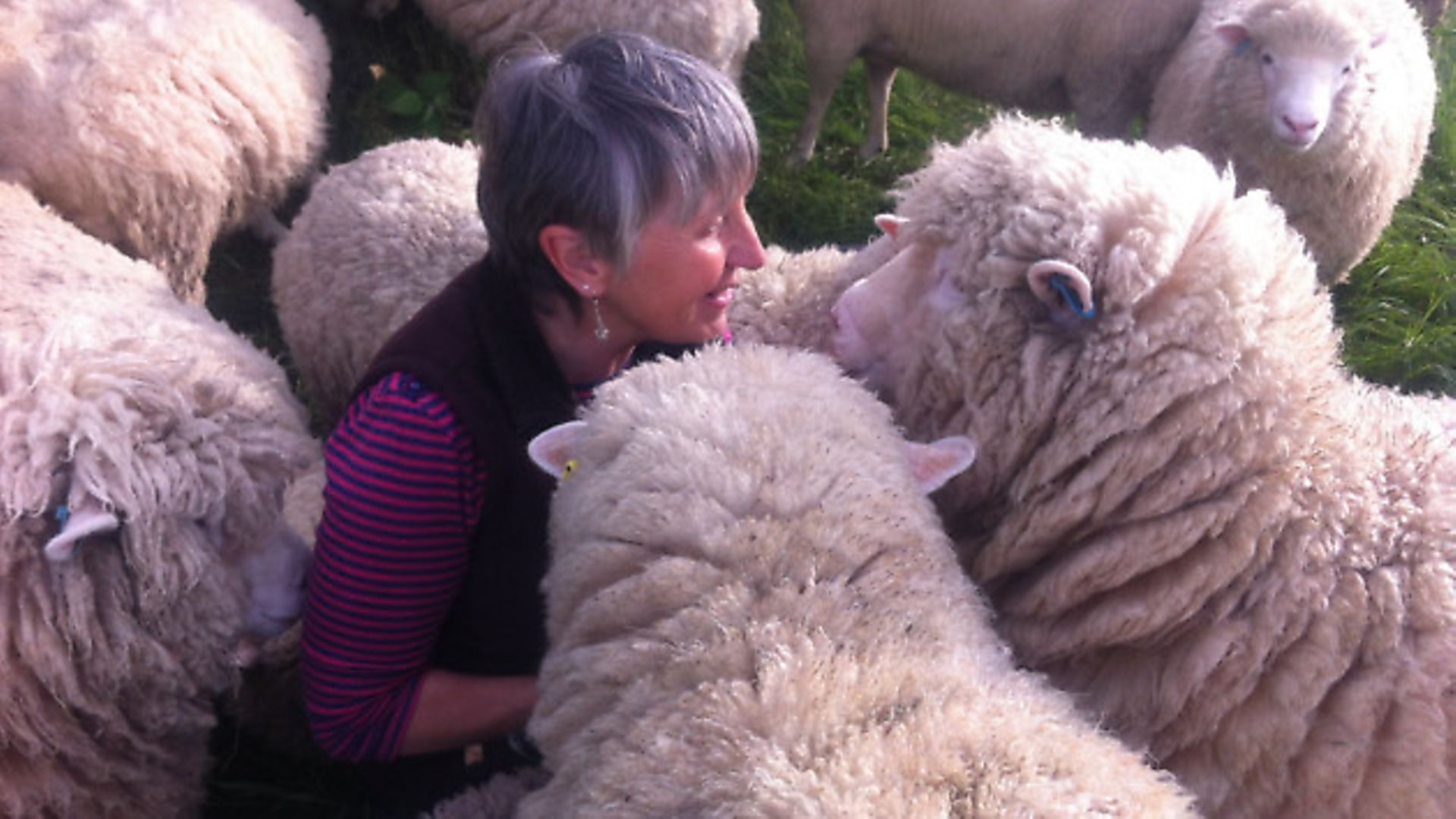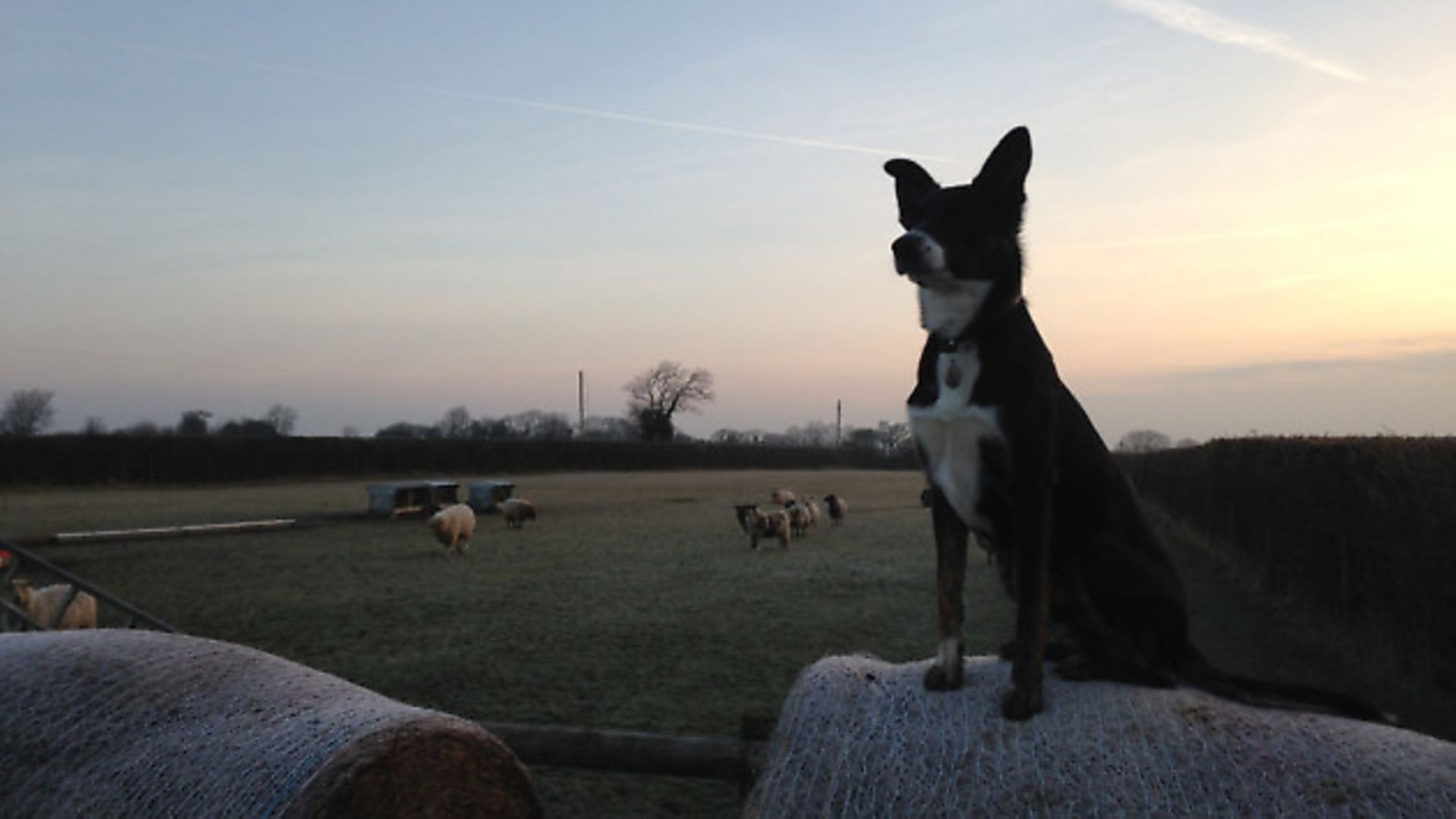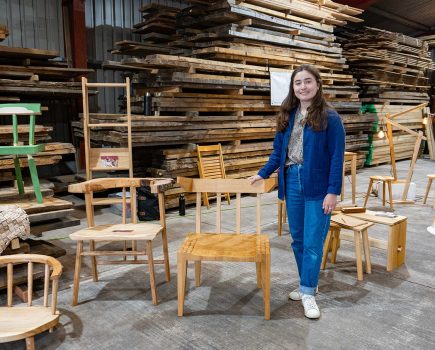Since Jane Bissett took to shepherding, she has had some of the happiest times of her life. She talked to Debbie Kingsley

Jane Bissett is a shepherd and spinner living in the centre of Barry, in the Vale of Glamorgan. She has a small townhouse, and her 2.6-acre holding is three miles away in the village of Moulton. This is supplemented by a 0.5-acre ram paddock at the end of the village, a further 8.5 acres 10 miles away for summer use, plus 2 acres during the winter. On this split arrangement she shepherds three flocks of sheep, known as the Kennixton Flock; these consist of her own Poll Dorsets and Shetlands, the Water’s Edge Flock of Boreray Sheep and the Swanbridge Flock of Castlemilk Moorit sheep on their owner’s 10 acres. “It might be nice to have all my grazing closer on a traditional smallholding where I could limit my dashing about, but I’d miss the camaraderie of like-minded friends too much,” says Jane.
“Whilst I shepherd mainly on my own, I also have a supporting cast: my partner, Derek, who helps with the tasks which don’t involve handling the sheep, and three grandchildren who stay with us for the school holidays: Faith (9), Jacob (7) and Elise (6). Being around farming has taught them so much, especially respect for all the animals and the responsibility that goes with caring for the sheep, something that I hope will follow them into adult life.
How it started
“It all started when I had two working sheepdogs competing in obedience and we wanted to see if the dogs had the aptitude for herding,” said Jane. “Bonnie was amazing and I was referred to a trainer. We were getting along fine, but not having sheep at home was limiting. I tried to hire some, but that was a non-starter, then in 2008 I received a text message from my trainer: “If you can get some stock-fenced land I have some lambs you can have.” Firstly, I thought the sheep were on loan until they grew or went to slaughter, and Derek didn’t help by saying ‘Yes, go on get them!’ Secondly we didn’t have any land, stock fenced or not, so I put up a notice in our local feed merchants and the next thing we were driving back from Batheaston with eight ewe lambs in the back of a Fiat Doblo – don’t ask!
“This was the beginning of what has turned out to be the most special time of our lives. That May we had a surprise addition of a lamb to the flock as one of the ewes gave birth out of the blue. Thankfully lambing was my one and only area of expertise, so all went well. Then, in the autumn, I was gifted a pedigree Poll Dorset ram by a friend with whom I had lambed over the previous five years, and that was the beginning of my own flock. The following spring I lambed from a tent and have never been so cold in my life!

The showing bug
“We decided to enter the sheep in our local agricultural show. A look at the schedule revealed that we didn’t really have the right sheep so decided butcher’s lambs was a goer. To our amazement, we took first in our class and Reserve Champion Butcher’s Lamb. Bitten by the bug and with a pedigree ram, we decided to get some Poll Dorset ewes and the Kennixton Flock was born. By this time we had seen some land for sale and decided to see if we could purchase it. It was far from easy but, in the end, a lifestyle loan against the house did the trick.
“As time went on, the flock increased and, with my love of wool and spinning, I bought some Shetland sheep. We sell Dorset wool, which is spun into knitting yarn, Shetland fleeces, sheepskins and, of course, lamb and mutton for the table. We are registered suppliers of Welsh Lamb and supporters for the Campaign for Wool and, when Prince George was born, we presented his grandfather, HRH the Prince of Wales, with a sheepskin at the Royal Welsh Show.
“Lambing is always exciting with Shetland sheep. The lambs arrive in so many colours that, if you put a bet on, you would probably lose. The Dorsets are a calming influence and I lamb half the flock at the end of March with the Shetlands and the other half at the beginning of September, which is the start of the Dorset breed year. This means that I am constantly thinking about bloodlines and improvements. I am trying to breed higher worm resistance into the flock and built a small barn out of pallets so that the sheep can be wormed off the pasture to reduce re-ingestion of eggs. When tested, some of my Shetlands had a high natural resistance and I have started to track these bloodlines to see where this has been passed on. The Dorsets are also monitored and I know the health of the flock has benefited because of it.
“As well as the sheep, I was having to hold down a full-time job. My day usually started around 5am with stock checks, and I was at my desk by 7am. My bosses were wonderful and, with flexi hours and the ability to take the dogs with me to the office, life was good. I used my leave for three weeks of lambing with the agreement that I would get to work if needed within 10 minutes. It was getting more difficult for me to enjoy my job; I just wanted to be a full-time shepherd and that was all there was to it. Derek was going to turn 70 and we wanted to spend more time together. On December 17, I was ceremoniously driven from RAF St Athan, where I had spent 19 years as a Media Communications Officer, to my new life as full-time shepherd. Half my former work colleagues thought I was mad and the other half wished they had the courage to follow their dreams.
The hardest part
“The hardest part is not being in control. One element is the weather. You are constantly having to chop and change the jobs to fit in with what nature throws at you. Networking with other people keeps you sane, and thank goodness for Twitter, which provides access to a wealth of knowledge, fun, laughter and friendship and, most importantly, knowing that you are not alone. The most fun we have is showing. It’s when you can get out, meet up with friends and everyone gets to show off their sheep. I would like to say it is fiercely fought, but this year my grandchildren spent as much of their time helping get other people’s sheep ready as they did their own. My Shetlands had their best year ever and, for the first time, I entered the Flock Master Competition at the Royal Bath and West Show. My wonderful home bred ram not only took first place in the Wool on the Hoof section, but came with me on the journey that ended with me becoming Royal Bath and West Show Champion Flockmaster 2016 – I could have exploded with delight! The ram went on to take Elise to second place in the Young Handlers class and his season ended being inspected by the Shetland Sheep Society and becoming an approved breeding ram.
“Being able to share my love of the sheep, the fact that wool is a wonderful, natural sustainable product and is really important to me. I took a teaching qualification and now teach hand spinning workshops. There’s something magical about taking fluffy fibre and turning it into something that can be used to make clothing, all by hand. I always spin whilst lambing as many hours are spent just watching the sheep and I can be productive at the same time. It can be addictive; I have been known to spin whilst cooking the dinner too.
“The sheep have opened up a whole new world for me and made me think seriously about our responsibility for the future welfare of our planet. Some of the Shetlands are going to be undertaking conservation grazing next year, a project that I was very keen to get on board with. Shepherding isn’t a job, it’s a way of life; it isn’t always easy and the responsibilities often weigh heavily. I have had to learn many new skills; I shear all my sheep by hand (thankfully they do not own a mirror between them) although some Shetlands roo, which means their fleeces come away naturally. My personal best shearing time is 29 minutes, not world class, I’ll agree, but the job gets done. I’ve had to turn my hand to fencing alongside Derek, and have to market my yarn, sheepskins and meat.
Some tips
“For anyone thinking about getting sheep, make sure you get the right breeds for your environment. Don’t be afraid to ask for advice and visit flocks – most shepherds are delighted to host you. Think about your age, your holding, handling systems etc… one breed of sheep does not fit all. The UK has over 60 different breeds of sheep, more than any other country in the world, and there’s one out there for you.
“I run educational visits to schools, telling children about the history of sheep. The Romans were so impressed with British sheep that they wrote home saying how fine the wool was. I show them pictures of the Woolsack in the House of Lords and their eyes widen as I tell them that the underwear of the first men on the moon was wool.
“As a woman in what has traditionally been a man’s world, I would like to offer the following advice: “If you ever want to wear a skirt again, don’t get horned sheep! And invest in a sports bra, as having your arms pinned to your sides by elastic is very overrated.”
Image(s) provided by:
Archant







